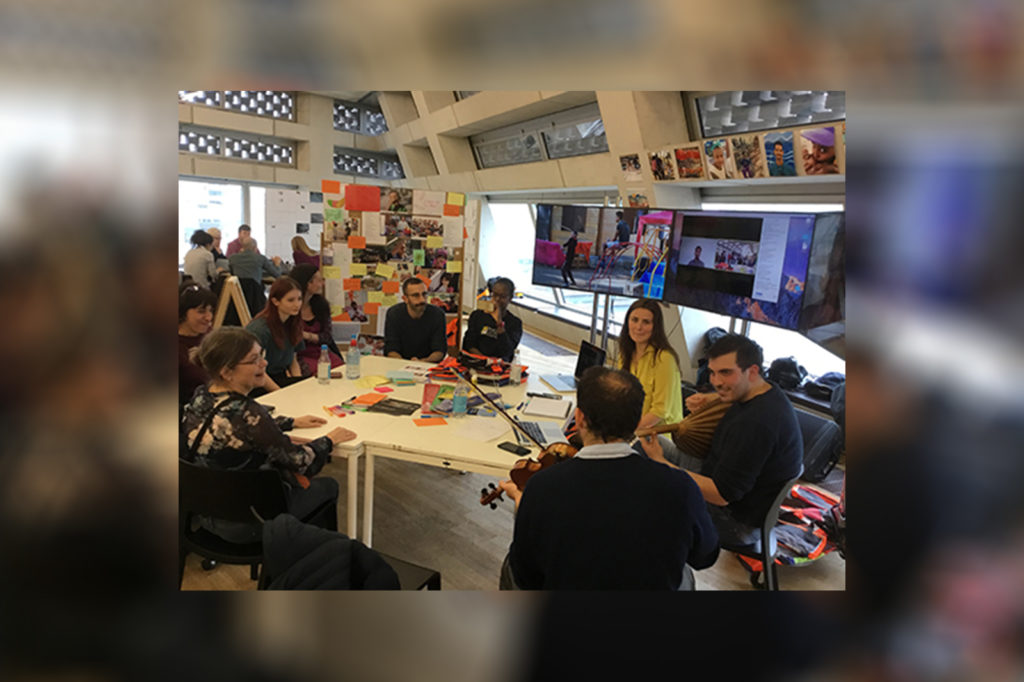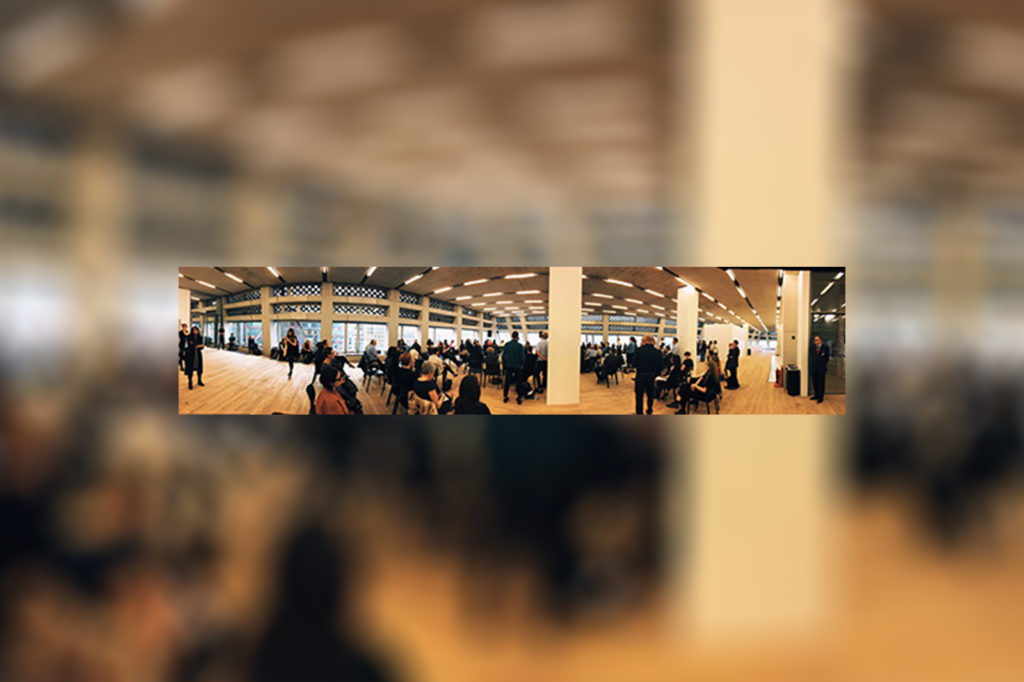The 18th edition of international arts communication conference Communicating the Museum, organised by Paris-based cultural communications agency Agenda, will take place in the French capital from 19 to 22 June 2017. Three hundred museum professionals will gather for discussions around the theme The Power of Education, analysing trends and sharing best practices. Anna Cutler, Director of Learning at Tate, which launched its pioneering Tate Exchange programme in 2016, is one of the featured keynote speakers, and took the time to answer a few of our questions leading up to the conference.
Can you tell us about a defining professional experience for you in terms of your longstanding focus on learning-oriented activity?
In 2002, 15 Creative Partnerships Directors (of which I was one) were invited to set up a three-year programme in our regional areas in England (mine was Kent), aimed to create conditions for creative learning with artists and arts organisations in schools for the benefit of children. Something in me asked the question of why I was doing this and my responsibility to those involved. I started reading a lot about creative learning, I talked to local artists, organisations, and head teachers and I went to look at what was already happening in the political and social arena of our locale. I tried to figure out how we would go about this programme and how we would assess what was happening. All my instincts told me to slow down, be experimental, take educated risks and authentically find out what was going on. Most importantly I felt compelled to do this with others and to go on a journey with the expertise that they brought to the table. Effectively I recognised the need for me and for all of us to learn and do things better; not just to transmit, tell, inform or insist on what we already ‘knew’. A whole new realm of possibility opened up.
In this I had to be resilient. Every month a chart would arrive with all the numbers of projects and programmes up and running around the country. My area (Kent) had a big fat zero of activity appear practically for an entire year. I’d get a call every time to ask me about it and I’d explain that we were training, working together, embedding ideas, thinking, having conversations, reading, structuring, planning and learning. Now I look back and realise how brave and trusting those above me were: they let me invest in time and people.
The approach turned out to be highly effective, and in the following years the work in Kent really took off, and the artists and schools made extraordinary interventions, innovations and meaningful creative learning experiences for all involved. For the first time I felt that I had sight of what conditions create what kinds of learning experiences and why creativity, the arts and creative learning are so crucial to human development – socially, emotionally and intellectually.

- © Tate Photography
Can you describe the Tate Exchange programme briefly?
Tate Exchange is an open experiment. It’s an ongoing programme of events and activities developed by artists, practitioners, the public and associates who work both within and beyond the arts sector, aimed at building a dialogue around art, society, and the wider issues facing us today. It’s a new civic space in the Tate Modern Switch House, and on the first floor galleries at Tate Liverpool – a place across Tate for the public to drop in for a talk, join in the conversation, enjoy a chance encounter and learn something new.
Tate Exchange is also a platform for opening up the museum, testing ideas and encouraging new perspectives with and through art. It is for anyone and everyone who wants to participate in the creative process at Tate and explore new ways of thinking about art and its value to society.
The programme is shaped by three phases from September to June every year. The first was launched on 28 September 2016 with the artist Tim Etchells, who created a series of activities that involved hundreds of members of the public in profound and lengthy discussions about everything from art to love to money. The second phase involves the Founding Associates programme, which includes organisations from around the UK [focused on] youth work, literature, health, architecture, philosophy, dance [and more]. The third phase is dedicated to sharing our evaluation and research findings openly, to ask what we have learnt in this first year and what it amounts to.
We anticipated that about 200 people might wish to get involved each day in Tate Exchange, but it’s been about 500 to 600 a day, sometimes more. Over 100,000 people in total have got involved so far (London and Liverpool), way above our expectations. The level of interest has been high and the level of engagement deep with 67% of the public staying from 20 minutes to over two and a half hours, many then going onto the galleries.
What has been the response to the programme in the first few months of its existence?
We have genuinely been amazed by the positive response. Although much is being learnt and the public are letting us know about the depth of debate and understanding that is happening for them, the emotional response that the programme has provoked has really been the most overwhelming aspect. We have seen a lot of unexpected human connection, tears and laughter. I, and much of the team working on the programme, have been hugged (and kissed!) and involved in some of the most profound conversations of our lives, often with total strangers.
Barbara, who is 86 and lives in the local housing near Tate Modern, sent me a long and emotional email that made me realise that something more than I had anticipated was happening for those participating. She said, ‘Your exchange projects are like an antidote of hope…I regard it as a huge privilege to have lived long enough to have been able to participate a little.’
The public entirely understand what is going on in the space and really enjoy getting involved. They have permission to step back and watch; nothing is forced. I realize now that Tate Exchange has taken on its own life (beyond that which I imagined) and is now created in new ways on a daily basis by the team who run it, the artists and associates that programme it, and the public that participate in and shape it.
This is not to say that there isn’t a lot to do better, or that there aren’t things that haven’t worked or been a bit tense! We have experienced very empty days and terrifyingly full ones! We have had people wanting more and those wanting less. We have had some failures and some people who don’t want to engage. On a technical note, we want to make deeper connections between Tate Exchange content and the collection as well as with wider debates on art and society, but as we draw to the end of the second of the three phases, we are all fairly inspired by what has happened and what seems possible.

- © Tate Photography
What insight might museum professionals from other countries and contexts glean from this Tate initiative?
I hope that this will encourage others to take the risk, to do what they know to be of value and that really enables profound forms of learning to take place. Perhaps it will illuminate the reality of our changing society and the public’s expectations of the museum. Dare we resist business as usual and go with the changes in attitudes and behaviours of the public? Change can happen, even in a big institution! The world is a different place and people have a much stronger sense of their involvement (or lack of this) and their ownership of the public realm. It has been my experience that they want to be part of something relevant and current. This includes a wider and more diverse public than we have experienced to date, who also want and need to take us to task about what we do, how we do it, and with and for whom. I have realised that people want a profound connection, they want it through art and debate, and they want to learn about each other and themselves. They need us to learn too, and we must! At a time in which the world looks ever more divided and tolerance and generosity, listening and empathy feel thin on the ground, Tate Exchange has opened up a small glimmer of what’s possible. I definitely didn’t do that; the participants, the programmers, the people involved in creating the processes and practices of the experience in Tate Exchange have done that for themselves. In this way a new kind of ‘civic’ seems to be emerging.

© Tate Photography
–
Tate Exchange is supported by Freelands Foundation, Arts Council England, Paul Hamlyn Foundation and Tate Patrons. We would like to thank Jonathan Robinson and Shelagh Wright for their role and contribution in the development and design of Tate Exchange.
